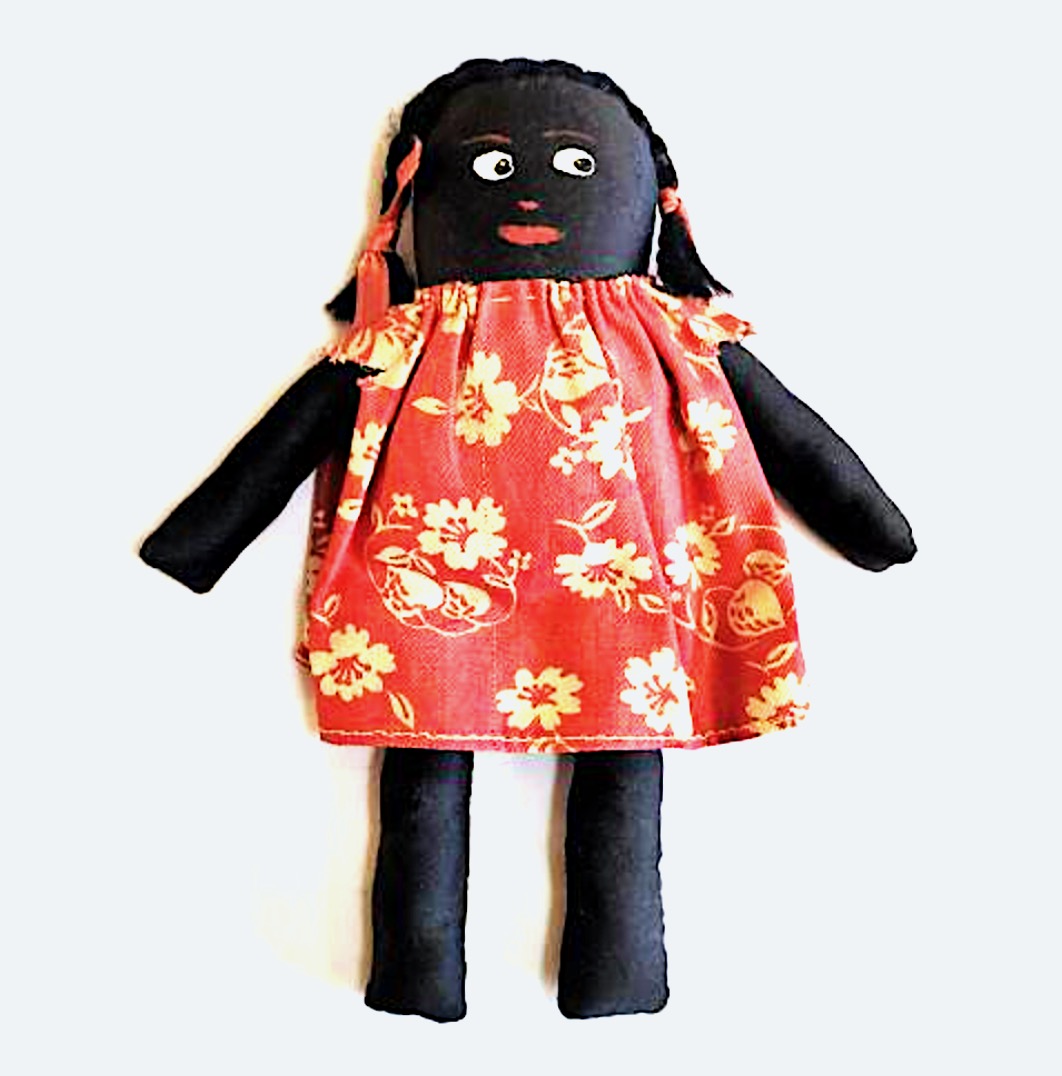

Title: Antique Arts and craft Soft Cloth Black Female Raggedy Ann Doll
Shipping: $29.00
Artist: N/A
Period: 20th Century
History: Art
Origin: North America > United States
Condition: Excellent
Item Date: N/A
Item ID: 429
Here is a Beautiful example of a 20th-century antique handmade Arts and Crafts African American Black Doll made of polished cotton and dressed in a cotton sundress and matching shorts. From the 1930s-50s, this doll has a hand-painted face and a braid across the top of her head. She is from a collection of dolls from around the world, but I don’t know if she’s American or from another country. She has been kept on display in a cabinet for years and is in amazing shape! No moth holes or damage of any type. She is 6 ½” tall and 2 ½” wide across the shoulders. Antique memorabilia can be considered valuable for a number of reasons. It can be a way for collectors to connect with history and learn about the past. Many people find the process of collecting antiques to be enjoyable and fulfilling, and it can be a way to appreciate the craftsmanship and attention to detail that went into creating these items. Some people also collect antique memorabilia as an investment, as the value of certain items can increase over time. Additionally, antique memorabilia can serve as a way to preserve cultural or historical artifacts and pass them down to future generations. It is difficult to determine the exact extent of the popularity of collecting black memorabilia, as it is not a mainstream hobby and many collectors may not publicly acknowledge their interest in these items. However, it is clear that some people collect black memorabilia as a way to celebrate or preserve a particular aspect of American history. There are also some people who collect black memorabilia as a way to profit from the sale of these items. Some collectors may view such items as valuable antiques or collectibles, and they may seek out rare or unusual pieces to add to their collections. However, the vast majority of people find black memorabilia offensive and harmful, and there is a growing movement to recognize the harm caused by these items and to work to prevent the production and sale of black memorabilia. Many people view such memorabilia as a form of hate speech, and they believe that it is important to confront and challenge the racist beliefs and attitudes that underlie such items. Black memorabilia refers to objects, often mass-produced and sold as collectibles, that depict African Americans in a stereotypical or demeaning way. These objects can include figurines, dolls, ashtrays, and other household items that feature caricatures of black people, often with exaggerated physical features or in subservient or demeaning poses. The history of black memorabilia is closely tied to the history of racism and segregation in the United States. During the 19th and early 20th centuries, black people were frequently depicted in racist and derogatory ways in popular culture, including in advertising, literature, and on stage. These representations often perpetuated harmful stereotypes and reinforced negative views of black people. Black memorabilia was often produced and sold as a way to capitalize on these negative stereotypes, and it was not uncommon for such items to be displayed in homes and businesses as a way to reinforce a sense of superiority among white people. In recent years, there has been a growing movement to recognize the harm caused by black memorabilia and to work to prevent the production and sale of these items. Many people view such memorabilia as offensive and hurtful, and there are efforts underway to educate people about the history of racism in the United States and the impact that such memorabilia can have on people of color.
It is important to recognize that black memorabilia is not art in the traditional sense of the word. Rather, it is a form of mass-produced, commercialized objects that depict African Americans in a stereotypical or demeaning way. These objects are often created with the intention of reinforcing negative stereotypes or exploiting harmful prejudices, rather than to celebrate or elevate the lives and experiences of black people. Some people may argue that black memorabilia has an aesthetic value, as it can be considered a reflection of the cultural attitudes and values of the time in which it was produced. However, it is important to recognize that the primary purpose of these items was not to create art, but rather to reinforce negative stereotypes and prejudices about black people. Many people view black memorabilia as offensive and hurtful, and there is a growing movement to recognize the harm caused by these items and to work to prevent their production and sale. It is important to acknowledge the harmful impact that such objects can have on people of color and to recognize that they do not represent a valid or meaningful form of art.